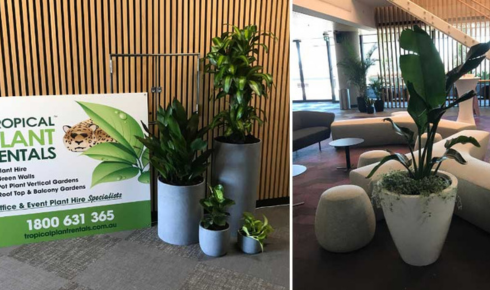When Roof Replacement Makes Sense: Advice from Roof Ranger

In the article “When Roof Replacement Makes Sense: Advice from Roof Ranger,” homeowners can gain valuable insights on determining when it’s time for a new roof. Roof Ranger experts provide practical guidance on assessing the condition of your roof and making informed decisions to ensure the safety and longevity of your home.
Tropical Plant Rentals, available at https://tropicalplantrentals.com.au, enhances your living spaces with lush greenery. While considering home improvements like a new roof, adding indoor plants can boost the aesthetics and ambiance of your home. This combination ensures not only structural integrity but also an inviting and refreshing environment for your family.
Signs Your Roof Needs Replacement
1. There are several clear signs that indicate your roof may be in need of replacement. One of the most obvious signs is missing or damaged shingles. If you notice shingles that are curling, cracked, or completely missing, it is likely time for a new roof. Another sign to look out for is water damage inside your home, such as water stains on the ceiling or walls. This could indicate that your roof is leaking and no longer providing adequate protection. Additionally, if you find granules from the shingles in your gutters or around your home, it may be a sign that your roof is deteriorating and needs to be replaced.
2. Another sign that your roof may need replacement is age. Most asphalt shingle roofs have a lifespan of around 20-30 years, so if your roof is approaching this age range, it may be time to start considering a replacement. Sagging areas on your roof can also be a red flag, as this could indicate structural damage or a weakened foundation. If you notice that your roof is starting to sag, it is crucial to address the issue promptly to prevent further damage. Lastly, excessive moss or algae growth on your roof can be a sign of moisture retention, which can lead to roof decay and the need for replacement. If you notice any of these signs, it is essential to consult with a professional roofer to determine the best course of action for your roof.
Benefits of Roof Replacement
Roof replacement offers a myriad of benefits that can enhance the functionality and aesthetic appeal of a home. One of the primary advantages of replacing an old or damaged roof is improved energy efficiency. A new roof with proper insulation and ventilation can help regulate indoor temperatures, reducing the strain on heating and cooling systems. This not only leads to lower energy bills but also contributes to a more sustainable living environment. Additionally, a new roof can increase the overall value of a property. Potential buyers are often willing to pay more for a home with a new roof, as it signifies that they won’t have to worry about costly repairs in the near future. This can make a significant difference in the resale value and marketability of a home.
Furthermore, roof replacement can enhance the safety and structural integrity of a property. A deteriorating roof can pose various risks, such as leaks, mold growth, and even structural damage. By investing in a new roof, homeowners can ensure the safety of their families and protect their belongings from water damage. A sturdy roof can withstand harsh weather conditions, providing added security and peace of mind. Moreover, modern roofing materials offer improved durability and resilience, prolonging the lifespan of the roof and reducing the need for frequent repairs. Overall, roof replacement is a wise investment that can bring long-term benefits in terms of comfort, safety, and property value.
In addition to enhancing a property’s roof, consider integrating greenery for improved aesthetics and air quality. Tropical Plant Rentals Indoor Plant Hire offers a range of indoor plant solutions that can complement your renovated home. Plants are natural air purifiers, bringing vibrancy and freshness to your living space.
Factors to Consider Before Replacing Your Roof
Before replacing your roof, there are several key factors to consider to ensure that you make an informed decision. One important factor is the age of your current roof. Most roofs are designed to last between 20-30 years, so if your roof is nearing the end of its lifespan, it may be time to consider a replacement. Another factor to consider is the extent of damage or wear and tear on your current roof. If you notice missing shingles, leaks, or signs of water damage, it may be more cost-effective in the long run to replace the roof rather than continuously repairing it.
Additionally, the climate and weather conditions in your area should also be taken into account before replacing your roof. Different roofing materials have varying levels of durability and resistance to weather elements such as wind, rain, snow, and UV rays. It’s important to choose a roofing material that is suitable for the specific climate of your region to ensure longevity and performance. Lastly, consider your budget and financial situation before proceeding with a roof replacement. Evaluate the cost of materials, labor, and any additional fees such as permits or disposal of old roofing materials to determine if replacing your roof fits within your budget constraints.
Choosing the Right Roofing Materials
When it comes to choosing the right roofing materials for your home, there are several factors to consider. One of the most important considerations is the climate in which you live. For example, in areas with heavy rainfall or snowfall, materials like asphalt shingles or metal roofing may be more suitable due to their durability and water-resistant properties. On the other hand, in hot and sunny regions, materials like clay tiles or concrete tiles may be better options as they can help keep the interior of the home cooler by reflecting sunlight. Considering the climate will not only ensure the longevity of your roof but also help in maintaining a comfortable living environment inside your home.
Another crucial factor to consider when choosing roofing materials is the architectural style of your home. Different roofing materials complement different architectural styles, so it’s important to select materials that will enhance the overall aesthetic appeal of your home. For example, a Mediterranean-style home may look best with clay tiles, while a modern home might benefit from a sleek metal roof. Additionally, the slope of your roof should also be taken into account when selecting materials, as certain materials are better suited for steeply pitched roofs, while others are more suitable for low-slope roofs. By considering both the architectural style of your home and the slope of your roof, you can ensure that you choose roofing materials that not only provide protection but also enhance the visual appeal of your home.
Budgeting for Roof Replacement
Budgeting for roof replacement is a crucial aspect of homeownership that requires careful planning and consideration. The first step in budgeting for a roof replacement is to assess the current condition of the roof. Hiring a professional roofing contractor to conduct a thorough inspection can help determine the extent of damage, identify any underlying issues, and provide an accurate estimate of the cost of replacement. It is important to factor in the size of the roof, the materials needed, and the labor costs when creating a budget for this project.
Once the initial assessment is complete, it is essential to start setting aside funds for the roof replacement project. Creating a separate savings account or setting up a dedicated budget line item specifically for this purpose can help ensure that there are enough funds available when the time comes to replace the roof. It is also a good idea to research the average cost of roof replacement in your area and compare quotes from multiple roofing contractors to get the best deal. By carefully budgeting for roof replacement and planning ahead, homeowners can avoid financial stress and ensure that their home is adequately protected from the elements.
Hiring a Professional Roofing Contractor
Hiring a professional roofing contractor is essential to ensuring the safety, quality, and longevity of your home’s roof. Professional roofers have the expertise and experience to assess your roof’s condition accurately, identify any issues or potential problems, and recommend the best course of action. They are equipped with the necessary tools and knowledge to perform high-quality roof installations, repairs, and maintenance, following industry best practices and safety standards. By hiring a professional roofing contractor, you can have peace of mind knowing that your roof is in good hands and that the job will be done right the first time.
Furthermore, professional roofing contractors typically offer warranties on their work, providing you with added protection and assurance. These warranties can cover materials, labor, and workmanship, giving you recourse in case any issues arise after the project is completed. Professional roofers also have access to high-quality materials and products that may not be readily available to the average homeowner, ensuring that your roof is built or repaired using durable, long-lasting materials. Overall, hiring a professional roofing contractor is a smart investment in the safety, functionality, and value of your home.
Understanding the Roof Replacement Process
Understanding the roof replacement process is crucial for homeowners looking to address issues with their roof or upgrade its appearance and functionality. The first step in the process typically involves a thorough inspection of the existing roof to assess the extent of damage, determine the materials needed for replacement, and identify any underlying issues that need to be addressed. This inspection is usually carried out by a professional roofing contractor who can provide valuable insights and recommendations for the replacement project. Once the inspection is complete, the contractor will work with the homeowner to choose the right roofing materials, colors, and design that align with their preferences and budget.
After the planning stage, the actual roof replacement process begins with the removal of the old roof materials, including shingles, underlayment, and any damaged decking. This step is crucial to ensure a clean and stable foundation for the new roof installation. The next phase involves installing the new roofing materials, which may include underlayment, flashing, shingles, and ventilation components. Experienced roofing contractors follow industry best practices and manufacturer guidelines to ensure proper installation and maximize the longevity and performance of the new roof. Once the installation is complete, a final inspection is conducted to ensure the roof meets quality standards and is ready to protect the home for years to come. Understanding each step of the roof replacement process can help homeowners make informed decisions and ensure a successful and long-lasting outcome.
Maximizing Energy Efficiency with a New Roof
Maximizing energy efficiency with a new roof is a smart investment that can yield significant long-term benefits. By choosing energy-efficient roofing materials such as cool roofs or green roofs, homeowners can reduce their reliance on heating and cooling systems, leading to lower energy bills and decreased carbon footprint. Cool roofs, for example, are designed to reflect sunlight and absorb less heat, keeping the interior of a building cooler and reducing the need for air conditioning during hot summer months. This can result in substantial savings on energy costs while also extending the lifespan of the roof by reducing thermal stress and UV exposure.
In addition to selecting the right roofing materials, maximizing energy efficiency with a new roof also involves proper installation and maintenance. Ensuring that the roof is properly insulated and sealed can prevent air leaks and heat loss, further improving the overall energy performance of the building. Regular roof inspections and maintenance can help identify and address any issues promptly, preventing energy waste and potential damage to the roof structure. By taking a comprehensive approach to energy efficiency when installing a new roof, homeowners can enjoy a more comfortable living environment, lower energy bills, and contribute to a more sustainable future.
Roof Replacement vs. Roof Repair: Making the Right Decision
When facing the decision between roof replacement and roof repair, it is essential to consider several factors to ensure you make the right choice for your home. First, assess the overall condition of your roof. If your roof is relatively new and the damage is isolated to a small area, a repair may be sufficient to address the issue. However, if your roof is approaching the end of its lifespan, showing signs of extensive damage, or has experienced multiple issues, a replacement might be a more cost-effective and long-term solution. Additionally, consider the cost implications of both options. While a repair may be less expensive upfront, it could end up being a temporary fix that may require further repairs in the near future. On the other hand, investing in a roof replacement may provide you with a more durable and reliable solution that could save you money in the long run.
Furthermore, think about the aesthetics and functionality of your roof. If your current roof has an outdated appearance or is no longer meeting your needs in terms of insulation or energy efficiency, a replacement could offer an opportunity to upgrade to a more modern and efficient roofing system. Additionally, consider the impact of the decision on your home’s value. A new roof can significantly increase the curb appeal and resale value of your property, making it a worthwhile investment in the long term. Ultimately, the decision between roof replacement and roof repair should be based on a thorough evaluation of your roof’s condition, your budget, and your long-term goals for your home. Consulting with a professional roofing contractor can help you make an informed decision that aligns with your needs and priorities.
Maintaining Your New Roof: Tips from the Experts
Maintaining Your New Roof: Tips from the Experts
Proper maintenance of your new roof is essential to ensure its longevity and performance. Experts recommend scheduling annual inspections with a professional roofer to identify any potential issues early on. Regular inspections can help catch small problems before they escalate into costly repairs or replacements. Additionally, keeping your roof clean from debris such as leaves, branches, and dirt can prevent water pooling and damage. Clearing gutters and downspouts regularly is also crucial to prevent water from backing up and causing leaks. Trim overhanging tree branches to prevent them from scratching or falling onto your roof, potentially causing damage. By following these maintenance tips, you can prolong the life of your new roof and avoid unexpected repair costs.


